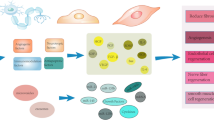Abstract
Background
Rapid advancements have been made in alternative treatments for renal diseases. Our goal for renal regeneration is to establish a kidney graft derived from human embryonic tissues. In this study, we investigated the effects of host renal failure on the structure and activity of transplanted embryonic kidney and bladder, and found that diuretics effectively induced urine production in the transplanted kidney.
Methods
Uremic conditions were reproduced using a 5/6 renal infarction rat model. An embryonic kidney plus bladder (embryonic day 15) was isolated from a pregnant Lewis rat and transplanted into the para-aortic area of a 5/6 renal-infarcted Lewis rat. Following growth, the embryonic bladder was successfully anastomosed to the host ureter.
Results
We assessed graft function in terms of survival rates and found no differences between normal (n = 5) and renal failure (n = 8) groups (median survival: 70.5 vs 74.5 h; p = 0.331) in terms of survival, indicating that the grafts prolonged rat survival, even under renal failure conditions. Furosemide (n = 9) significantly increased urine volume compared with saline-treated controls (n = 7; p < 0.05), confirming that the grafts were functional. We also demonstrated the possibilities of an in vivo imaging system for determining the viability of transplanted embryonic kidney with bladder.
Conclusion
The results of this study demonstrate that transplanted embryonic kidney and bladder can grow and function effectively, even under uremic conditions.
Access this article
We’re sorry, something doesn't seem to be working properly.
Please try refreshing the page. If that doesn't work, please contact support so we can address the problem.






Similar content being viewed by others
References
Tonelli M, Wiebe N, Knoll G, et al. Systematic review: kidney transplantation compared with dialysis in clinically relevant outcomes. Am J Transplant. 2011;11(10):2093–109.
Smith DH, Gullion CM, Nichols G, et al. Cost of medical care for chronic kidney disease and comorbidity among enrollees in a large HMO population. J Am Soc Nephrol. 2004;15(5):1300–6.
Matos ACC, Requião-Moura LR, Tonato EJ, et al. Expanding the pool of kidney donors: use of kidneys with acute renal dysfunction. Einstein (São Paulo). 2015;13(2):319–25.
Yokoo T, Ohashi T, Shen JS, et al. Human mesenchymal stem cells in rodent whole-embryo culture are reprogrammed to contribute to kidney tissues. Proc Natl Acad Sci USA. 2005;102(9):3296–300.
Yokoo T, Fukui A, Ohashi T, et al. Xenobiotic kidney organogenesis from human mesenchymal stem cells using a growing rodent embryo. J Am Soc Nephrol. 2006;17(4):1026–34.
Yokote S, Matsunari H, Fujimoto E, et al. Urine excretion strategy for stem cell-generated embryonic kidneys. Proc Natl Acad Sci. 2015;112(42):12980–5.
Marshall D, Dilworth MR, Ashton N, et al. Increasing renal mass improves survival in anephric rats following metanephros transplantation. Exp Physiol. 2007;92(1):263–71.
Hata T, Uemoto S, Fujimoto Y, et al. Transplantation of engineered chimeric liver with autologous hepatocytes and xenobiotic scaffold. Ann Surg. 2013;257(3):542–7.
Sasser JM, Moningka NC, Tsarova T, Baylis C. Nebivolol does not protect against 5/6 ablation/infarction induced chronic kidney disease in rats—Comparison with angiotensin II receptor blockade. Life Sci. 2012;91(1):54–63.
Yamanaka S, Yokote S, Yamada A, et al. Adipose tissue-derived mesenchymal stem cells in long-term dialysis patients display downregulation of PCAF expression and poor angiogenesis activation. PLoS One. 2014;9(7):e102311.
Acknowledgments
This research did not receive any specific grant from funding agencies in the public, commercial, or not-for-profit sectors. We thank Dr. Eiji Kobayashi for microsurgical techniques.
Author information
Authors and Affiliations
Corresponding author
Ethics declarations
Conflict of interest
None declared.
Ethical considerations
Animal experiments were carried out in accordance with the guidelines set by Jikei University School of Medicine. The protocol was approved by the Experimental Animal Committee of Jikei University (Permit Number: 2015-032) and conformed to the Guidelines for the Proper Conduct of Animal Experiments of the Science Council of Japan (2006), which adhered to the principles of the 3Rs ARRIVE Guidelines. All efforts were made to minimize animal suffering. Specimens from humans were not used.
About this article
Cite this article
Fujimoto, E., Yamanaka, S., Kurihara, S. et al. Embryonic kidney function in a chronic renal failure model in rodents. Clin Exp Nephrol 21, 579–588 (2017). https://doi.org/10.1007/s10157-016-1337-x
Received:
Accepted:
Published:
Issue Date:
DOI: https://doi.org/10.1007/s10157-016-1337-x




